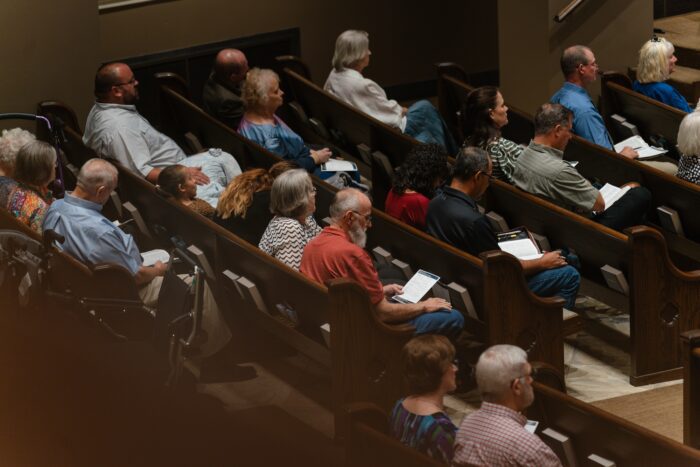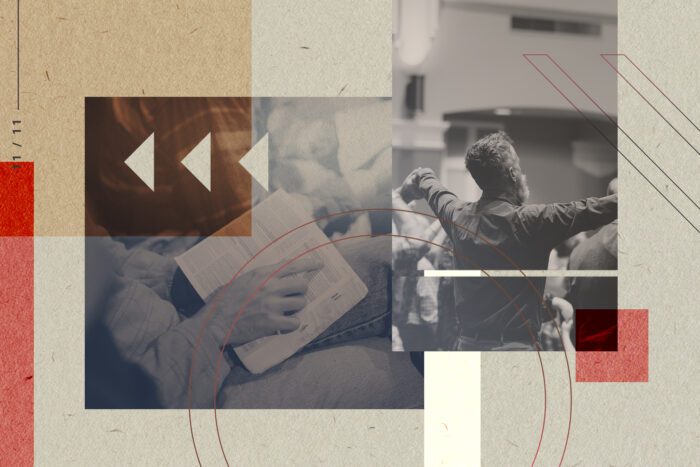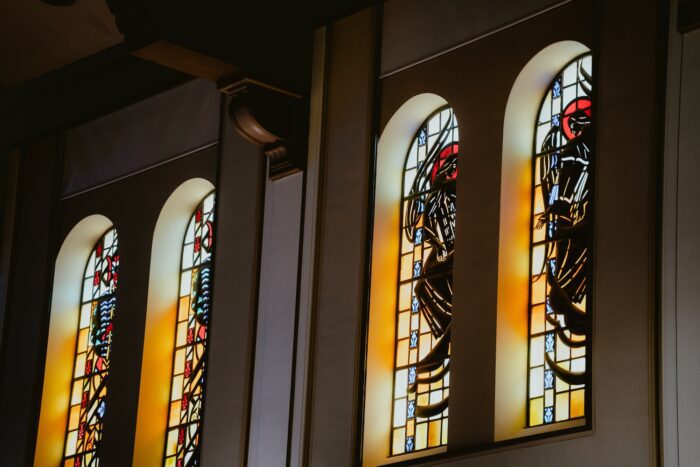Introduction
Contrary to the way some corners of contemporary Christianity portray the benefits of the Christian Gospel, salvation is not our escape from embodied existence. Rather than being a means for the human soul to break free from its temporary prison of flesh and bone, its interim “earth suit,” and ascend to its celestial, immaterial, dis-embodied eternal destiny, the Prophets and Apostles tell a different story. In Christ, our souls/spirits along with our bodies will be renovated, made new. The way that God originally formed human beings—as embodied souls—is preserved in his artful work of redemption and glorification. Our ultimate hope, what we confidently expect on the ground of inscripurated Gospel promises, includes an eternal destiny that concurs with humanity’s original creation. God, who is unchanging, immutable, and who originally designed the human body, in final recreation continues to value and prize the material, skin, bone, and blood he lovingly invented. In his reconditioning of the body in resurrection, when he makes it fit for eternity, God kindly purchases the body back from the consequences of sin and divine judgment, imparting to it immortality and incorruption.
The good news that the one and only true, living God is both the Creator and Savior of his creation fills the pages of the Holy Bible. In anticipation of Christianity’s celebration of Easter, we will trace this grand theme with particular focus upon the biblical theology of bodily resurrection, both Jesus Christ’s and ours. God’s glorious, holy character is at stake. Since he pronounced with delight through Moses that all his material creation, including human bone and flesh, was “very good,” to leave it in the dust of his judgment at salvation would raise doubt about the seriousness and integrity of his original valuation (Gen 1:31; 2:7; 3:19). As Creator he forms the human body by taking it from the dust and highly esteems it, as Judge he consigns it back to decay in the dust, and as Savior, he mercifully reclaims it from the dust once more, recreating it in glory forever.
The Shape of the Prophetic-Apostolic Witness
From Dominion to Decay
The biblical theology of bodily resurrection begins in Genesis 2:7 when, “the Lord God formed the man out ofthe dust from the ground (CSB).” The prepositions are foundational. God creates the first man by extracting him, pulling his granular substance out of, “taking” him “from” the dust of the ground (Gen 3:19). Human bodily existence, human life, is rooted in the Creator’s act of removal. God removes the stuff he uses to form us from the earth. Human beings have an essential relationship to the ground. They are extricated from it. In this divine creative deed, God lays the basis for resurrection.
The sad, yet righteous part of the prophetic revelation is that because of sin, God judged Adam. Three of the consequences? Death, burial, and decay. God pronounced to Adam that he would be interred and putrefy (Gen 3:19): He would “return to the ground,” from which he was taken and undergo decomposition. “‘For you are dust, and you will return to dust.’” The divine judgment of death and entombment reverse and nullify (at least temporarily) the marvelous, blessed divine gift of embodied life. We are meant to be forever dislodged from the ground and dust. As a matter of fact, we were created and blessed with the calling and obligation to have dominion over the earth and its creatures (Gen 1:28). Death, tragically, puts us right back into the ground. So much for original human potential of faithfulness to God! Burial is one of the most sorrowful rituals performed in society. Bondage to decay leads miserably to groaning (Rom 8:19-23).
From Universal Decay to Universal Resurrection
Nevertheless, God’s mercy endured. His consignment of human bodies to the dust will not be forever. For example, Daniel and Jesus both reveal a future, general resurrection of all the buried dead at a future, divinely appointed time. Daniel receives a vision in which he is informed that, “Many who sleep in the dust of the earth will awake, some to eternal life, and some to disgrace and eternal contempt (Dan 12:2; italics mine). The prophecy harks back to the judgment of Genesis 3 that falls universally upon humanity, yet also, although figuratively as sleep and wakefulness, promises resurrection from the dead. All who have been overcome by the dust of the earth will be raised. The destinies of the raised, however, differ. Some are raised to “eternal life”; others to “eternal contempt.” Jesus, looking back to Daniel’s prophecy, echoes and illumines it: “‘Do not be amazed at this, because a time is coming when all who are in the graves will hear [the Son of God’s] voice and come out—those who have done good things, to the resurrection of life, but those who have done wicked things, to the resurrection of condemnation (John 5:28-29).’” The saved are raised to eternal life, the lost to eternal condemnation. All are raised. The difference is the type and quality of their resurrected bodies and their destinies. The lost remain eternally mortal and condemned, but the saved receive glorious, immortal bodies in eternal blessedness.
From the Resurrection of Christ to the Resurrection of the Children of God
The biblical teaching of resurrection against the background of the universal resurrection takes a decisive turn toward developing the resurrection of the saved. In the Old Testament we find it as a component of the prophetic promise of the New Covenant that God will make with Israel and extend to the Church. This covenant includes both interior blessings that change the hearts of the faithful and exterior blessings that transform the mortal bodies of the godly. For instance, in Jeremiah 31:33 and Ezekiel 36:25-27, God promises that rather than leaving them in their sin with the law merely written externally on tablets of stone he will act to purify them. Through the indwelling ministry of the Holy Spirit, he both forgives their lawless transgressions and internally inscribes the law on human hearts. In this way, he not only cleanses the human heart, only bringing it to a neutral condition, but renovates it by making his decrees part of a new, virtuous human nature. But also, the New Covenant promises bodily resurrection. Ezekiel 37:12-13 assures the faithful of Israel, and by extension to the Church, that the indwelling ministry of the Holy Spirit includes exterior, bodily blessing as well as interior ones. As Savior, God delivers the whole person he made as Creator. God promises through the prophet that “‘I am going to open your graves and bring you up from them.’” It becomes clear now that Ezekiel, too, along with Daniel, anticipated Jesus’ teaching on bodily resurrection in John 5. The assurance of bodily resurrection pledged to both faithful Jews and Gentiles comes as a New Covenant blessing through the ministry of the Son of God by the Spirit of God. At conversion it is inaugurated and sealed as a sure promise by the Spirit’s indwelling (Eph 1:13-14).
We also see it in Psalm 16:9-11 which is both about David’s own ultimate hope of bodily resurrection to eternal life and a prophecy of the resurrection of David’s son, Jesus, the Messiah. As he writes he rejoices in the divine promise that his “body,” in death, “rests securely” because God will not abandon it to the “decay” of the grave, the realm of the dead (“Sheol”), but will raise him to eternal life. Peter, in the first Christian sermon after Christ’s ascension at Pentecost, informs the crowd that although David still awaits his resurrection, Jesus has already experienced his in partial fulfillment of Psalm 16. Not only has Jesus received the Spirit from the Father, but “‘God has raised this Jesus to life,’” a historical event recorded in each of the Gospels (e.g., Matt 28:6; Mark 16:6; Luke 24:6; John 20:18) and a constant part of the apostolic Gospel (e.g., Acts 17:29-31; Rom 10:9; 1 Peter 1:3).
Thus, the first human being to experience the blessing of the resurrection of the righteous was Jesus, the son of Mary, who was the incarnate Son of God. His resurrection, celebrated in the Christian festival of Easter, is unique in two ways: (1) he was the first; and (2) his resurrection was salvific; it provided for the bodily resurrection of others who would follow to share in his resurrected glory: “But as it is, Christ has been raised from the dead, the firstfruits of those who have fallen asleep. . . . For just as in Adam all die, so also in Christ all will be made alive. But each in his own order: Christ, the firstfruits; afterward, at his coming, those who belong to Christ.” All believers, then, at Easter also thrill in the expectation of being raised bodily, like Christ, in “flesh and bone” (Luke 24:39) at his second coming. Furthermore, they rejoice in praise to the Father for his love by living in purity as they confidently await their share in Christ’s resurrected glory (Phil 3:19; 1 John 3:2-3) so that the body they inherit is not mortal or perishable, unfit for eternity, but imperishable and immortal, rehabilitated by the heavenly, life-giving, second Adam, Jesus Christ (1 Cor 15:35-54; 1 Peter 1:3-6). Then, when our bodies are redeemed, our adoption as the children of God will be consummated, and our insufferable groanings within decay will be considered incomparable to our glory (Rom 8:18-23). Alleluia!








